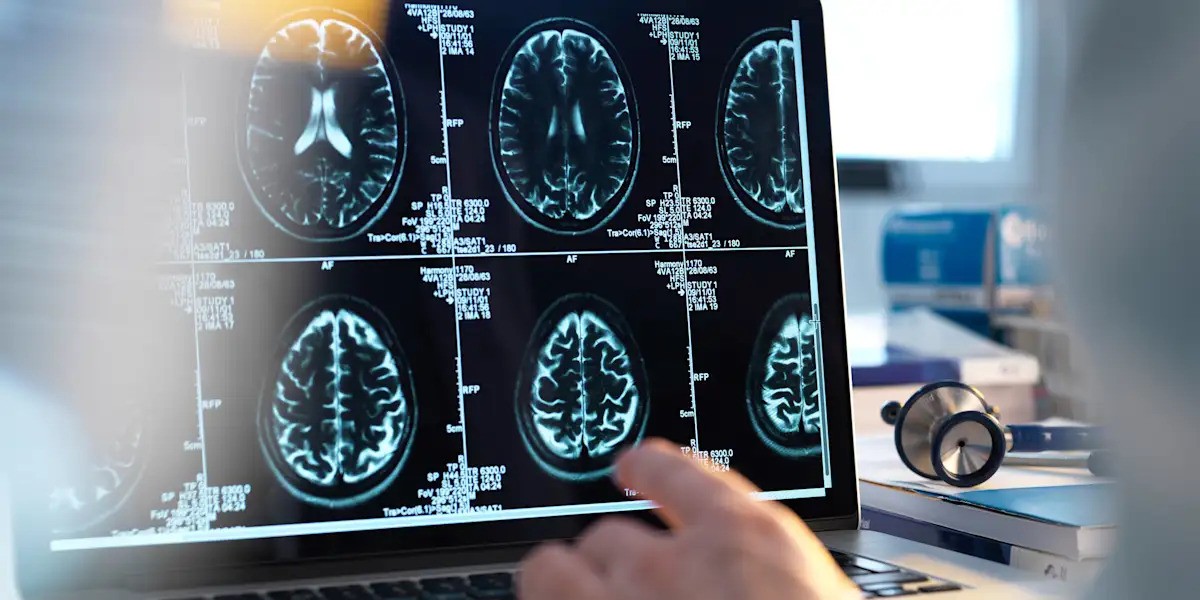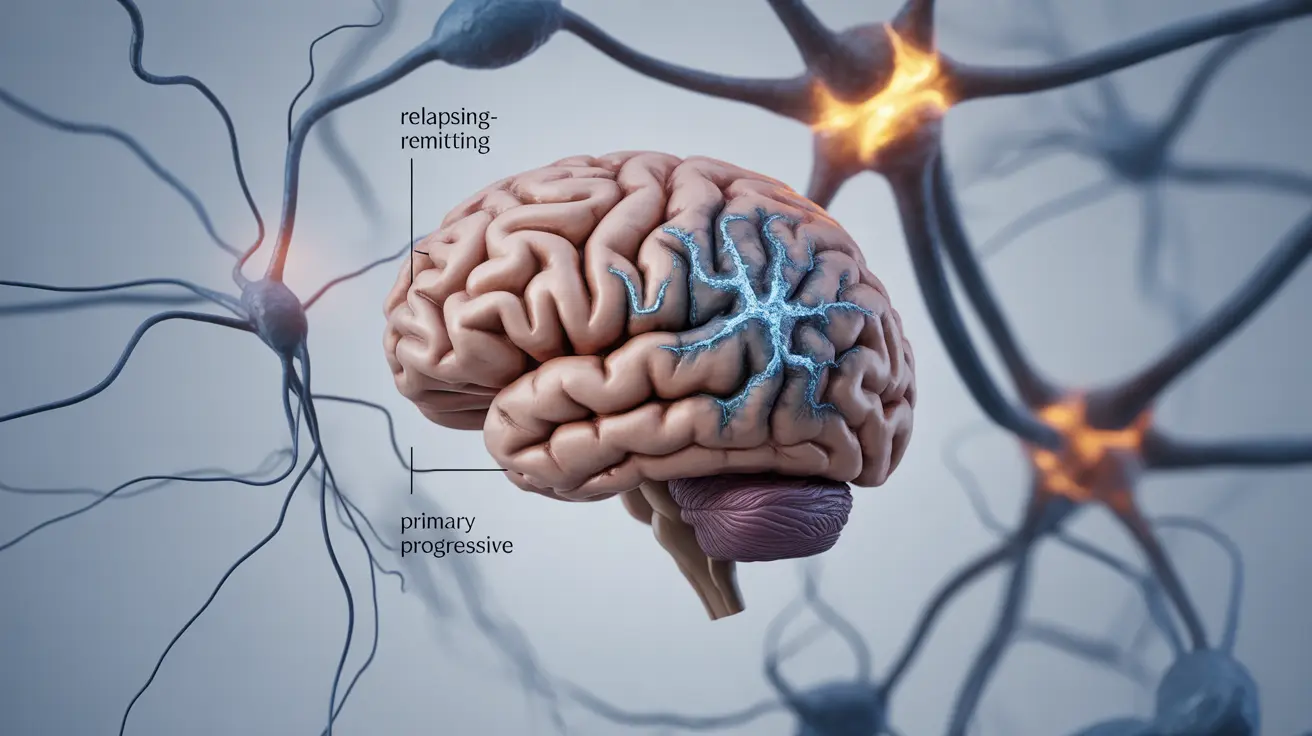Contents
There are four types of Multiple Sclerosis (MS). Each one works differently in the body. Understanding these differences is critical because the way MS progresses, how it’s treated, and how it affects your daily life depends heavily on the type.
What Are the 4 Types of MS?
The 4 types of MS are:
- Clinically Isolated Syndrome (CIS)
- Relapsing-Remitting MS (RRMS)
- Secondary Progressive MS (SPMS)
- Primary Progressive MS (PPMS)
Each has different triggers, symptom patterns, and progression speeds. Now, let’s explore each type in detail.
Clinically Isolated Syndrome (CIS): The First Warning Signal

Clinically Isolated Syndrome (CIS) is a single episode of MS-like symptoms. It might be the first sign of MS, but by itself, it’s not enough for a full diagnosis.
The symptoms come from a short-term inflammation in the brain or spinal cord, usually lasting more than 24 hours. This might look like:
- Blurry vision in one eye
- Tingling in the limbs
- Sudden weakness or imbalance
Not everyone with Clinically Isolated Syndrome (CIS) will develop Multiple Sclerosis (MS). The most important factor is what appears on the brain MRI.
If multiple lesions are visible on the scan, even if the person hasn’t noticed any symptoms, the risk of developing MS is significantly higher.
Today, doctors don’t wait for a second neurological episode. If the MRI shows silent damage, treatment may begin immediately. Starting treatment early can lower the risk of future MS attacks and slow down disease progression.
CIS is not just a “maybe” diagnosis. It’s often the immune system’s first visible activity before symptoms fully appear. In most cases, MRI findings are more critical than physical symptoms in predicting MS development.
Relapsing-Remitting MS (RRMS): The Most Active and Common Form

Relapsing-Remitting MS (RRMS) is the most common MS type. Over 80% of MS diagnoses start this way.
RRMS works in cycles:
- Relapses (when symptoms get worse or new ones appear)
- Remissions (when symptoms get better, sometimes fully disappearing)
Symptoms during a relapse may include vision problems, muscle weakness, dizziness, or difficulty walking. These issues can last several weeks or months, but often improve over time, sometimes returning to near-normal levels.
However, remission doesn't always mean stability. Even when you feel fine, the immune system may still be damaging the nervous system silently. This hidden progression is a core challenge in managing relapsing-remitting multiple sclerosis (RRMS).
What sets RRMS apart is its on-off disease pattern. One moment feels normal, and the next brings a sudden change. This makes timing and consistent tracking essential to understand the real course of the disease.
RRMS flare-ups don’t always match visible symptoms. Many people deal with "invisible symptoms" such as fatigue or cognitive fog even when no relapse is apparent. Relying only on obvious flare-ups often leads to an underestimation of true disease activity.
Secondary Progressive MS (SPMS): The Silent Shift

Secondary Progressive MS (SPMS) starts as RRMS—but after some years, it shifts. That shift means the disease no longer comes in flare-ups. Instead, there’s slow, steady worsening over time, whether or not there are relapses.
What’s happening under the surface? The immune system causes long-term changes in the brain. These changes:
- Reduce nerve function bit by bit
- Lead to more fatigue, mobility problems, and cognitive slowing
- Often go unnoticed at first
The most difficult part? The change from RRMS to SPMS is not sudden. Many people don’t realize it’s happening until they’ve already entered a more progressive phase.
Doctors use symptom history, walking tests, and MRI scans over time to confirm the transition. But there's no blood test or one-time scan that can give you a quick answer.
SPMS progression is not always visible on scans. A person might feel worse even if MRI shows no new damage. This happens when the damage moves deeper into the brain's core, beyond where normal imaging can detect it.
Primary Progressive MS (PPMS): A Different Path from the Start
Primary Progressive MS (PPMS) is unlike the other types because it doesn’t begin with relapses. Instead, it causes gradual worsening from the beginning and the symptoms don’t go away.
PPMS often affects walking, leg strength, and balance first. It usually shows up in the 40s or 50s and progresses slowly but steadily. Most people with PPMS don’t remember a “first attack.” They just notice they’re struggling with daily tasks more than before.
What makes PPMS harder to manage?
- It has less visible inflammation than RRMS.
- Standard MS medications don’t work as well.
- Damage happens more in the spinal cord than the brain.
Because of this, PPMS diagnosis takes longer, and many people are misdiagnosed at first with back problems, aging issues, or muscle disorders.
In PPMS, immune cells may be active but they’re trapped inside brain and spinal fluid spaces, slowly eroding the nervous system. This isolated inflammation is harder to detect and less responsive to traditional treatments.
Knowing the Type Changes Everything
Multiple Sclerosis is not a single disease. It includes four distinct types, each with its own symptoms, progression, and treatment approach. The type of MS you have directly shapes your daily experience, medical care, and future outlook.
That’s why a correct diagnosis is only the beginning. Understanding which type of MS you're dealing with is the first and most important step in building an effective treatment plan and managing the condition properly.
When you know the type:
- You can track the right symptoms
- Choose treatments with better timing
- Set realistic expectations for progress
Many people search for “how MS feels” or “when MS gets worse.” These are signals that understanding the type of MS is just as important as managing the symptoms.
How A-Medical Can Help Patients Seeking MS Diagnosis or Treatment Abroad
If you’re considering getting a diagnosis or treatment for MS abroad, A-Medical can make the entire process smoother, safer, and more cost-effective. MS care requires clarity, trust, and coordination, especially when it involves international travel. That’s where A-Medical steps in.
Here’s how we support your journey from start to finish:
- ✅ We organize one free call or video consultation with the clinic or doctor before you travel. You can ask any questions directly to the healthcare provider. This helps you make informed decisions with full transparency.
- ✅ We arrange all transfers, from the airport to the clinic and your hotel.
- ✅ A-Medical handles direct communication with clinics. You won’t need to chase paperwork or misunderstand medical staff due to language barriers.
- ✅ We offer discounted prices for treatments, procedures, and diagnostic services through our trusted partner hospitals and specialists.
- ✅ Hotel accommodation, interpreter services, and appointment scheduling are all included, so you can focus entirely on your recovery.
- ✅ We help manage your entire treatment plan. Whether it’s imaging, consultation, or long-term care, we ensure the entire medical process is aligned and clear.
For many MS patients, timing and precision are key. A-Medical doesn’t just send you to a clinic, we work to ensure you get the right diagnosis, from the right expert, at the right time. From your first question to your last appointment, we stay with you every step of the way.




